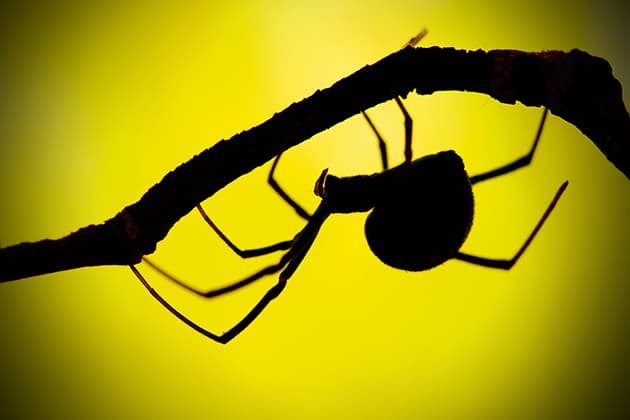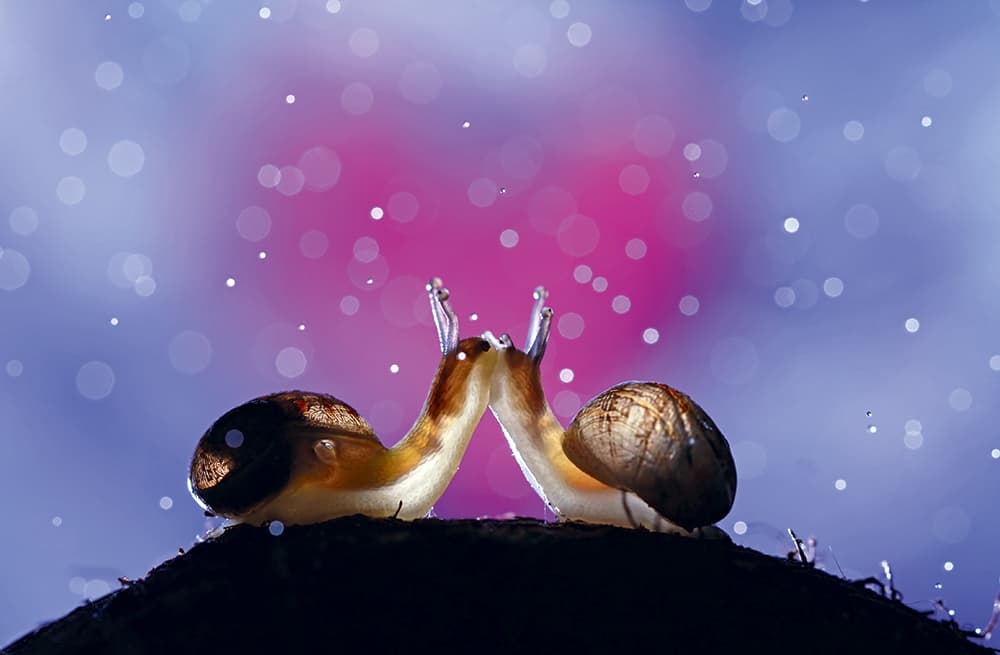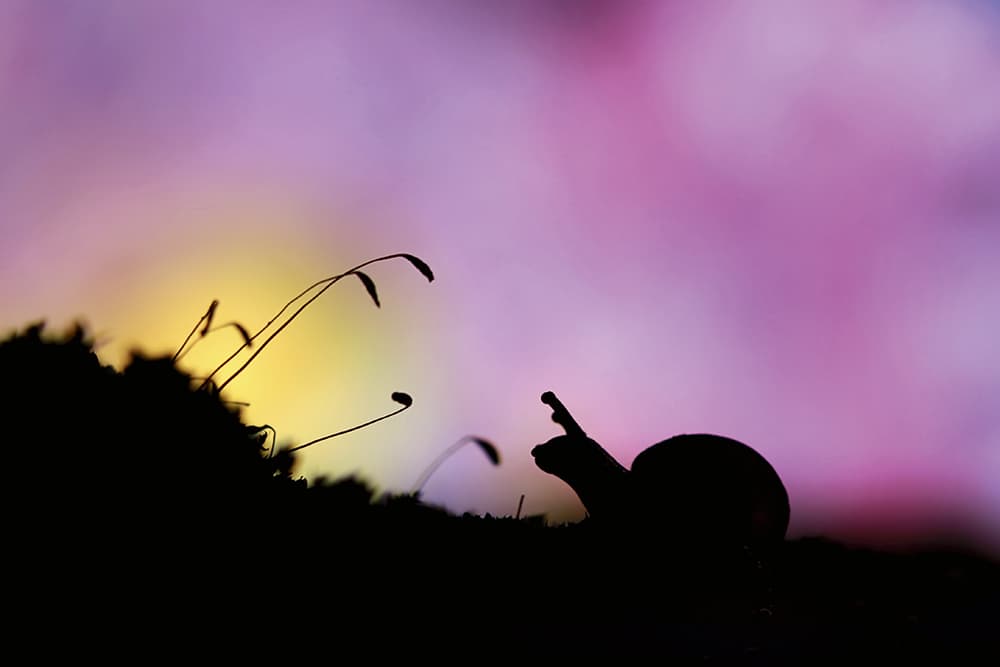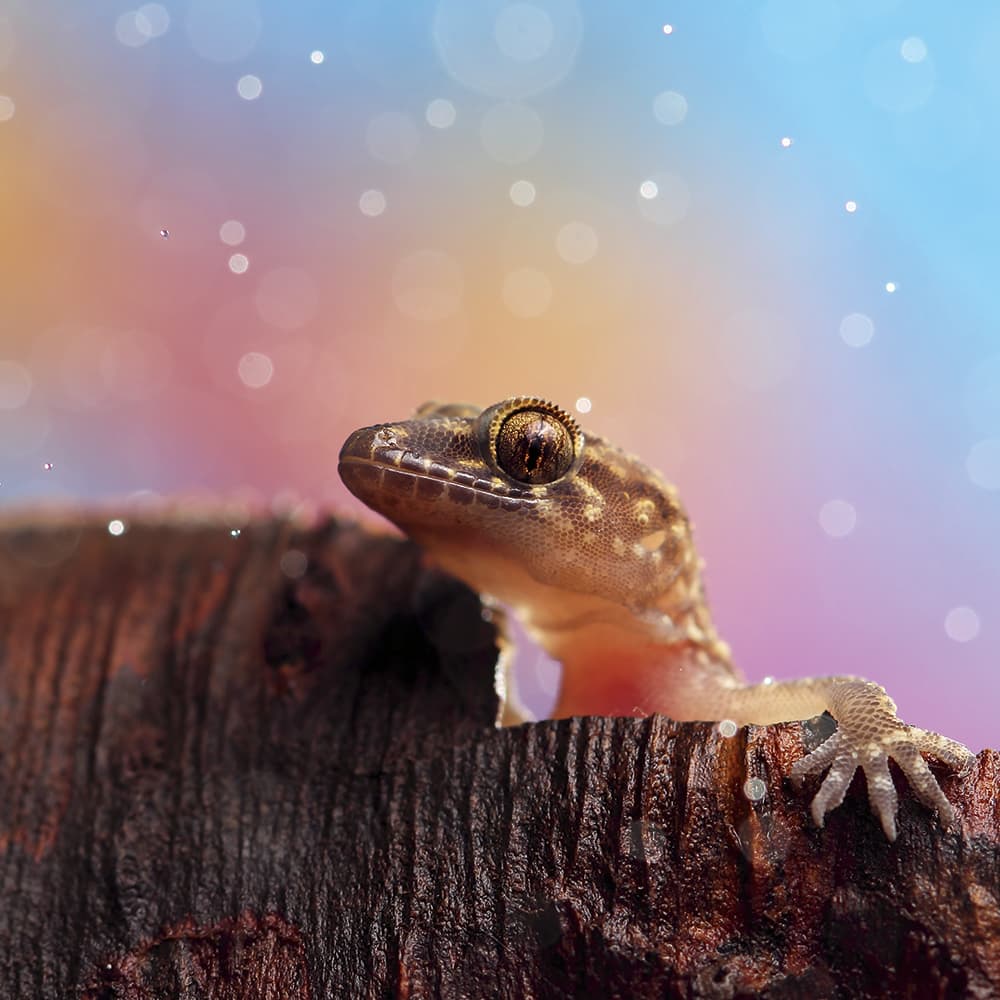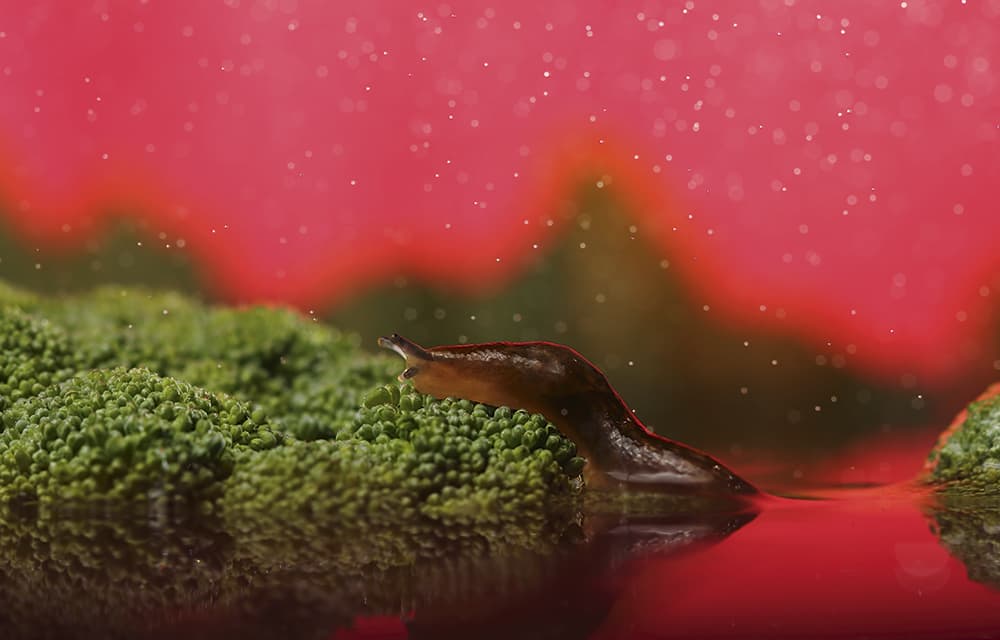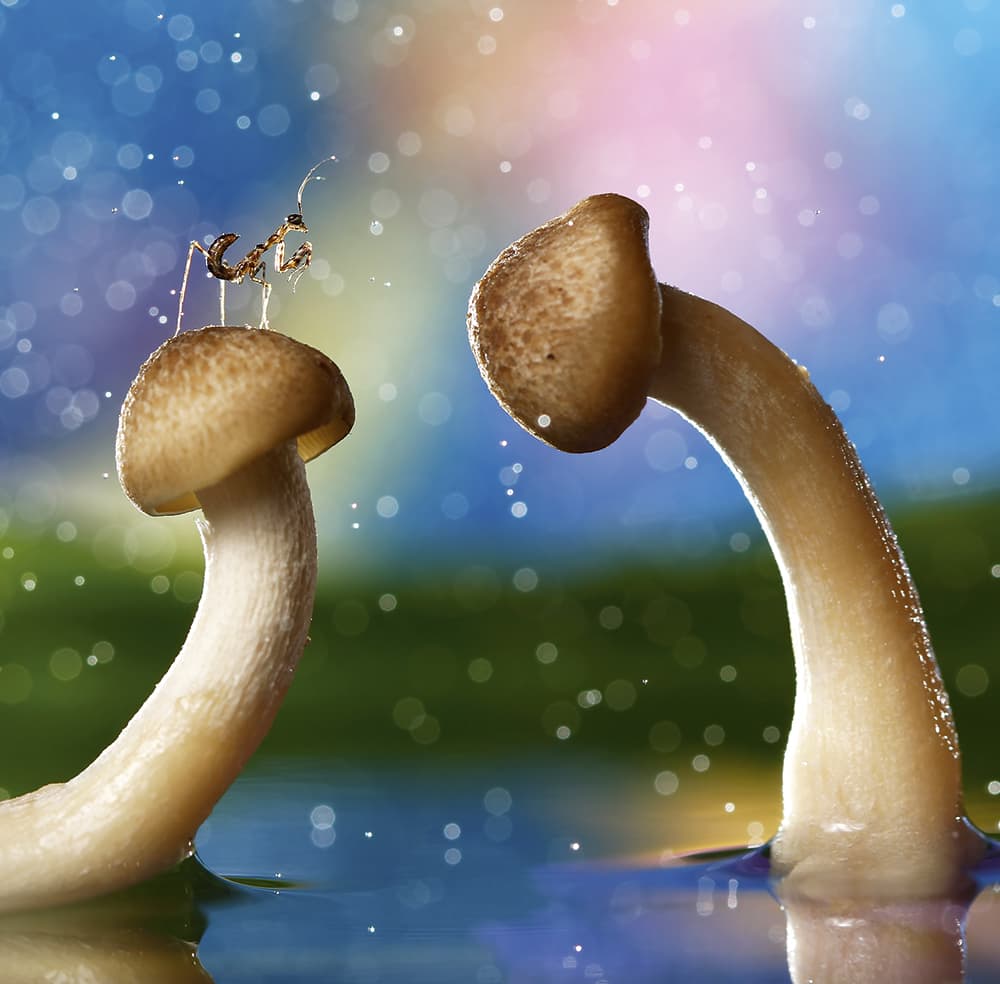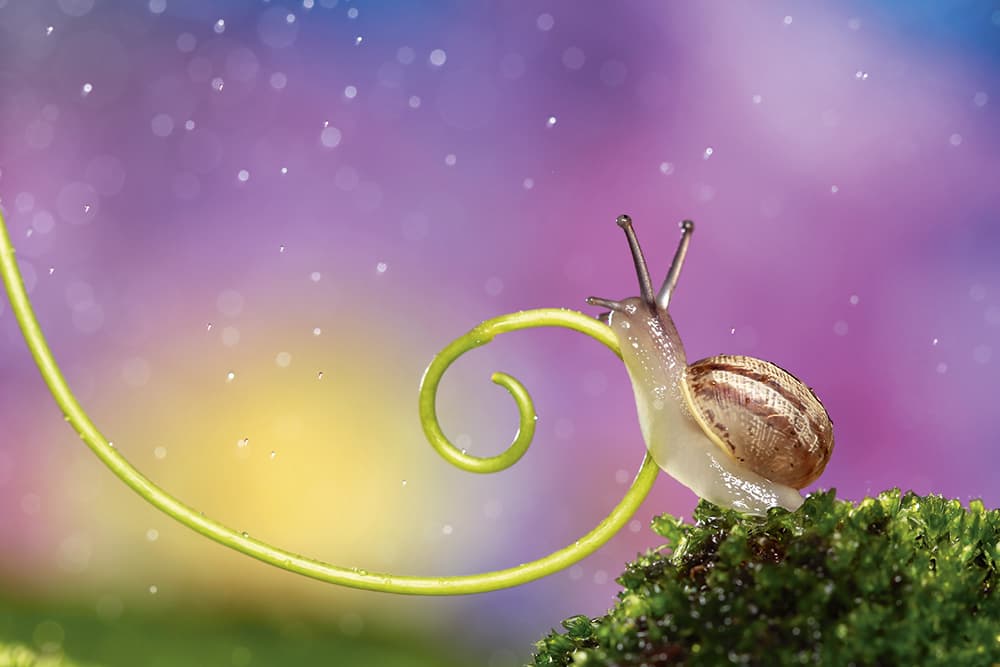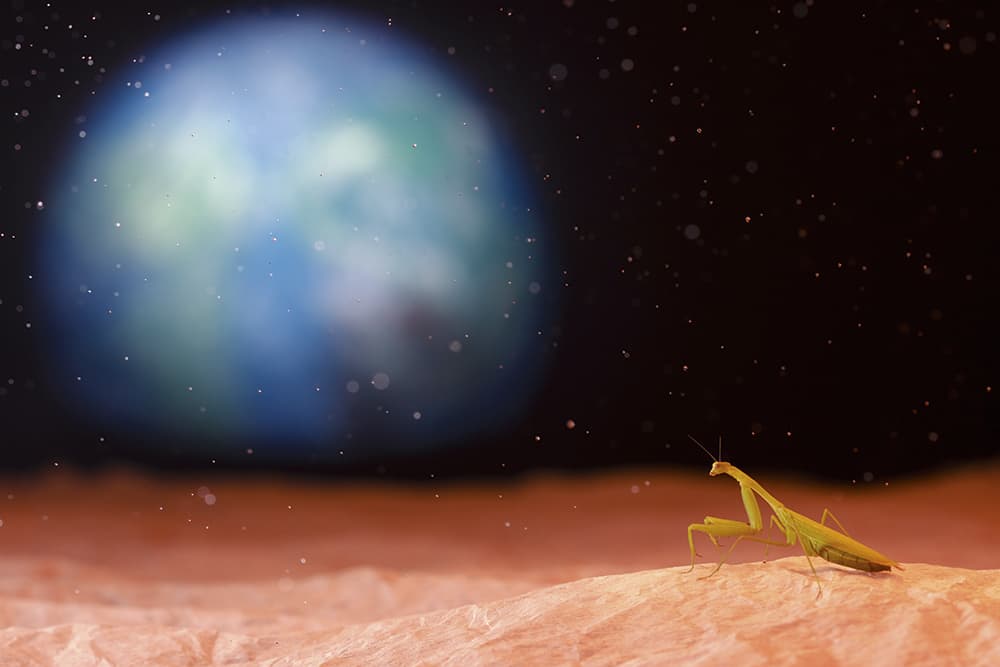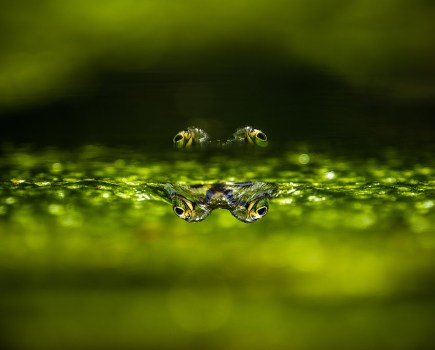Macro insect photography is a well-established genre and camera club contests up and down the country are likely to attract at least one carefully taken close-up of an insect. Israel-based photographer Nadav Bagim has spread his wings wider by photographing insects within carefully crafted imaginary worlds. The context in which they are placed recalls sci-fi, dreams and fairy tales, but however you interpret their milieu the images are utterly charming. Seeing bugs presented in this, very sweet and innocent, way is rather moving, and makes you regret all the times you’ve accidentally squashed a snail or swatted a fly. Nadav calls his project ‘Wonderland’ and explains how it came about.
Bug fantasia
‘I started “Wonderland” about four years ago,’ he explains from his home in Ramat Gan, Israel. ‘I’ve always loved nature and as a child spent most of the time with my nose inches above the ground tracking and observing little insects and animals. That’s why the first lens I bought was a macro. I started photographing about seven years ago – I’m self-taught and a big fan of trial and error. I now teach photography in several schools and lecture about macro photography and the tiny world around us.’
Before starting on ‘Wonderland’, Nadav worked on a project called ‘Aphids’, an attempt to create a new world of miniature landscapes (real and surreal) and work out the perspective and artificial lighting set-ups needed to achieve that effect. ‘I played around with it and when I started getting results, it gave me the inspiration to continue and develop the series, while bearing in mind my affection for sci-fi, fantasy and animated movies,’ he explains. ‘As the series progressed, it became very clear to me what kind of an atmosphere I wanted to create. But I was always wondering where the project would go next.’
Nadav built the sets for his insect fantasias on nothing more elaborate than a kitchen table. He describes how the set-up usually takes an hour or two, depending on how complex it is. ‘I use simple household objects or other items you can find lying around. So the ground is made of natural ingredients like vegetables, flowers, leaves, tree barks, moss and the like, which I arrange depending on what I’m trying to achieve.’
Super-fly lighting
Meanwhile, the vibrant backgrounds are achieved using mundane but colourful items, such as supermarket bags. Nadav takes advantage of the shallow depth of field in macro photography to transform them into richly hued, dreamy backdrops. ‘As for the particles in the air, those are created by spraying water droplets in mid-air,’ he explains.
While the set construction may be simple, the lighting set up is rather more complex, but not massively so. Nadav uses up to four Yongnuo YN560 manual flashes and says, ‘they are absolutely great and the price is even better.’ He also favours 30cm translucent studio umbrellas, light stands and remote controllers for the flashes. ‘All the equipment I use is relatively simple and cheap. We’re not talking about high-end gear, so building yourself a set like this is pretty affordable, especially if you use eBay,’ he says.
While Nadav has learnt a lot by setting up numerous insect shoots, he still has to do a lot of test shots, as he uses speedlights rather than continuous lighting. He also uses light modifiers to get a specific light. ‘The entire set is relatively small, so you have to be very accurate.’
Bug and Breakfast
Just in case you were wondering whether any bugs were hurt during the making of these images, Nadav assures us they were fine – he’s yet to hear from any of their lawyers.
‘The subjects didn’t get scared by the lighting, but I didn’t want to hurt them by using too much of a strong light. I used translucent umbrellas to soften the light and tried to place them far from the subject. I also tried to use a low power setting for the flashes so the light wouldn’t be too strong,’ he continues.
As for finding the subjects, Nadav looked no further than plants in his back garden. ‘I actually had an agreement with them – it’s called B&B or Bug and Breakfast,’ he jokes. ‘I spray sugar water on my garden plants and in return they allow me to photograph them.’
Nadav roped in snails, millipedes, ants, spiders, bees and even geckos, but reckons his favourite critter is the praying mantis. ‘They are fascinating and very curious insects that always have an intelligent look on their alien faces. Their curiosity makes it very easy and fun to interact and play with them. Watching a praying mantis hunt is amazing – they are very stealthy and stand still most of the time, but when they locate their prey, they wait for it to get closer and then lash out with remarkable speed to catch it. Their natural tendency to be still, combined with their curiosity, makes them perfect subjects.’
Pray as you go
Interacting with a praying mantis involves dangling a cotton swab in front of them, just as you would dangle wool in front of a cat. ‘I make them chase it in order to get them to climb to where I want, and to make them stand in the position that I need for the shot,’ says Nadav.
While some readers might feel uncomfortable about making a praying mantis perform in this way, there is something very sweet and innocent about how Nadav photographs his subjects. He also claims he has a higher purpose, to make us more mindful about taking care of his tiny colleagues and their environment. ‘What I was doing in “Wonderland” was trying to reveal a different side to all those tiny creatures, and show them in a different light. As a nature lover, an animal lover and a vegan, I believe we need to co-exist; most of them are not harmful to us and we usually fear them due to all sort of wrong stereotypes. Since this project was published, I get a lot of emails from people telling me of experiences with all those tiny creatures and how they now see them in a different and positive light. That’s very heart warming.’
As for his next project, Nadav is heading for the seaside. He says, ‘Summer is here and I don’t live far from the beach, so I’m planning on spending a lot of time on the shore with my camera and my lighting equipment and seeing what strange and wonderful creatures I can find there.’
A flea in your gear
When it comes to the equipment needed for a photographic bug fantasia, Nadav’s tools of choice are a Canon EOS 60D and a Canon EF 100mm f/2.8 Macro USM lens.
‘I don’t use editing software more than the average photographer, maybe even less. Sometimes the images require a little fine-tuning that mostly includes general brightness/contrast, white balance correction, noise reduction and a little cropping. But there is no change in the content of the photo.’
Indeed, Nadav is adamant that none of his photos are a photomontage or comp job. ‘There is no pasting in or cutting out objects, no selective colouring or saturation boosting or anything similar. The colours are real, the “snow” is real, and so are the insects, landscapes and the rest, they are all taken in camera. It takes a lot of time, effort and shutter clicks to synchronise all those elements together to a single moment in time, but the satisfaction you get when it all works is worth it,’ he says.
How Nadav shot ‘Life on Mars’
Nadav explains how he set up and shot one of his favourite images, a praying mantis on Mars
It’s in the bag
1. Although this was a planned shoot, I wasn’t really focused on how I wanted to shoot it, and the first big problem was how to make red Martian sand. I couldn’t find a material that had both the right colour and the right sandy texture. I ended up shooting white crepe paper and gelled the flash with an orange plastic bag. That gave the whole scene a Martian atmosphere.
Lighting up the Earth
2. Earth was made from a mash-up of different coloured nylon bags – a round blue one for the Earth and small ones for the continents. It was lit with a small flash and to create an Earth phase (just like a moon phase). I used a snoot to create a spotlight and light up just part of the planet.
Drop kicks
3. To create the illusion of stars in the background I used the simple technique of water droplets sprayed in mid-air.
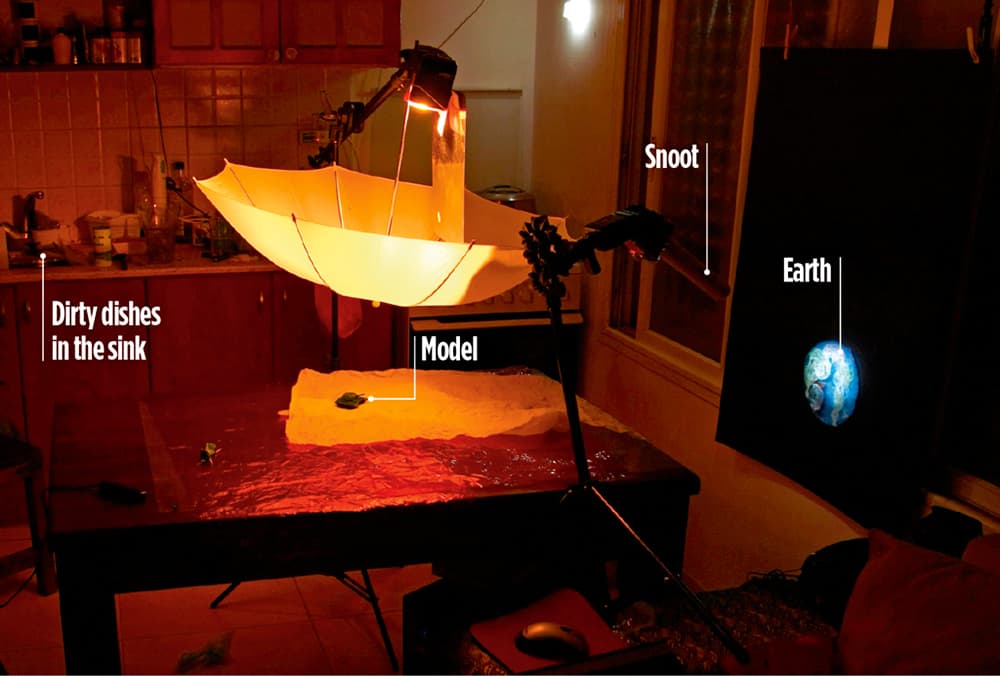
Nadav, 33, is a BSc student in Brain Sciences who lives in Ramat Gan, Israel. He started to take photography seriously seven years ago and became ‘enchanted by its magic’ after getting an SLR. Nadav is entirely self-taught and enjoys shooting nature, macro and landscapes, as well as many more objects and subjects that pop into his head. See www.aimishboy.com

